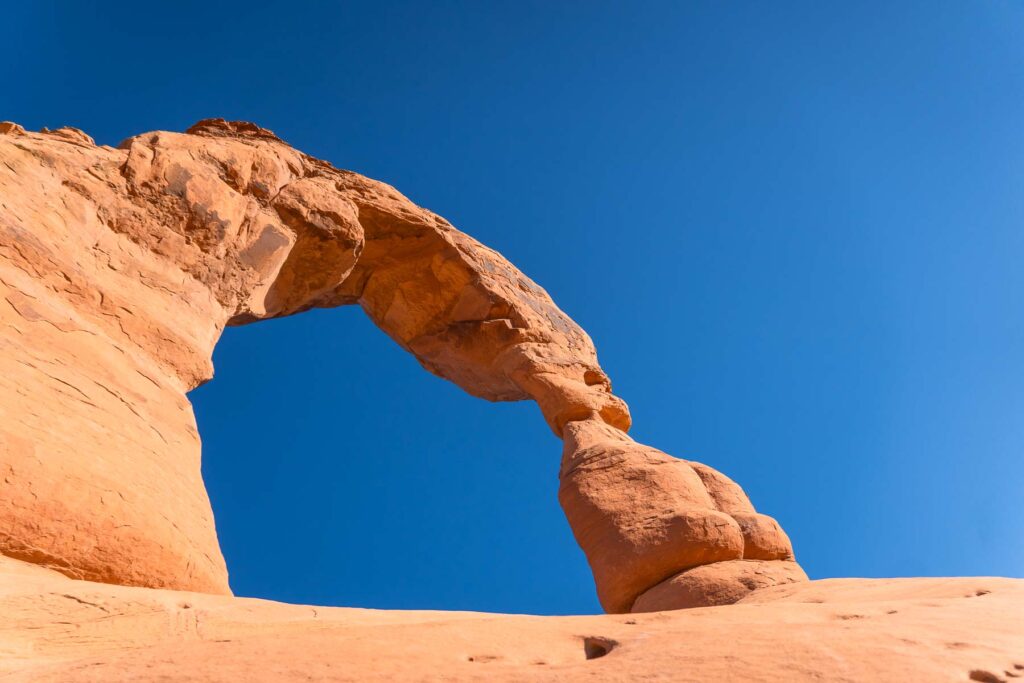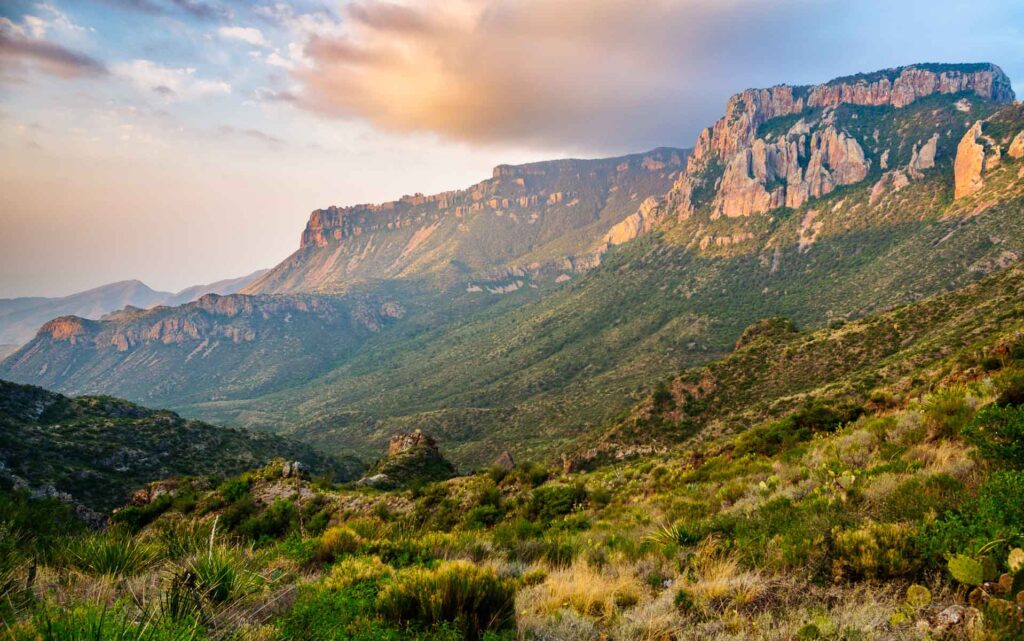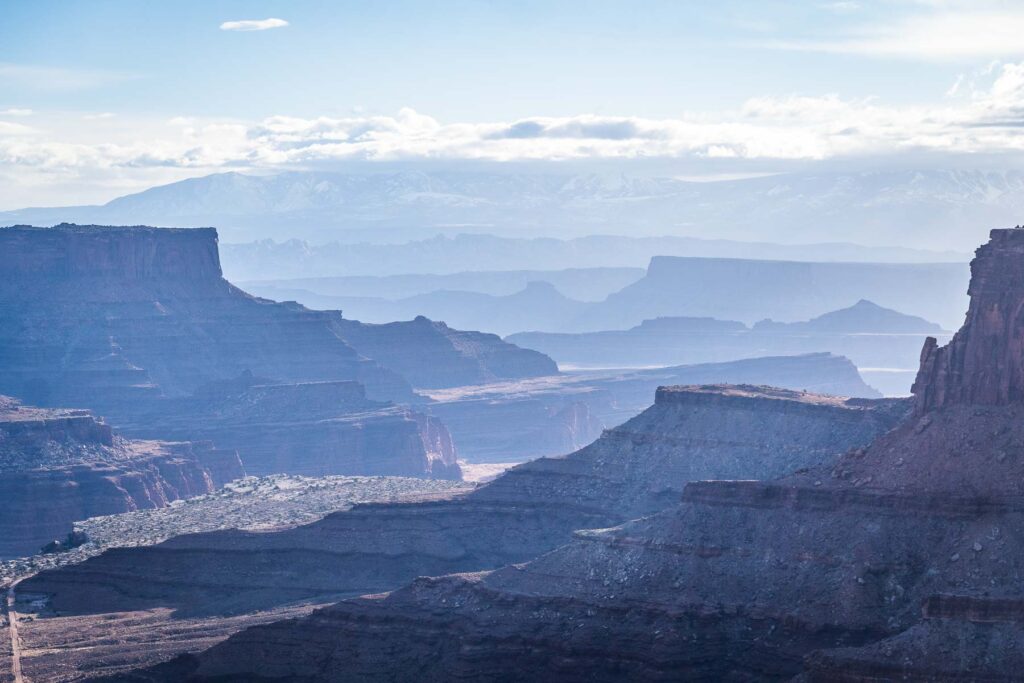10 National Parks Where Winter Feels Like Summer

If you’re dreaming about the most beautiful US natural wonders, you might want to think twice before you venture into some of these National Parks during the peak of summer.
This guide will give you 10 of the hottest national parks in the USA that transform into natural ovens. In some places, we’re talking dangerous heat from scorching sunrays that start right after sunrise and can soar well into the triple digits. Having visited over 28 national parks in two years, I often worried about my solar panels melting and my van overheating.
While I caution you about the heatwaves, don’t let it discourage you from going to these stunning parks. Instead, plan your trip during the cooler spring or fall months, when temperatures are more manageable.

1. Death Valley National Park, California
- Average Summer High: 115°F
- Highest Temperature Recorded: 134°F (56.7°C) in 1913
- Best Time to Go to Death Valley: November to March
As the name suggests, this National Park is known for its extreme heat. In fact, Death Valley National Park holds the record for the hottest temperature ever recorded on Earth. The intense heat makes walking, driving, or doing anything extremely difficult. I’ve gone in October once, and it was still way too hot. Plan a trip here only from late fall to early spring if you value your life.
Things to Do in Death Valley: See Badwater Basin, the lowest point in North America at 282 feet below sea level. Marvel at the colorful rocks and formations at Artist’s Palette and watch amazing sunsets at Mesquite Sand Dunes and Zabriskie Point.

2. Joshua Tree National Park, California
- Average Summer High: 100°F
- Highest Temperature Recorded: 122°F (50°C) in 1995
- Best Time to Go to Joshua Tree: October to May
Temperatures can easily reach triple digits in Joshua Tree National Park, and the park’s namesake trees are definitely not big or dense enough to provide enough shade in the desert landscape. The hot, dry climate and distance from any major city make this park a challenge to visit in the peak of the heat.
Things to Do in Joshua Tree: Hike through Hidden Valley and Keys View for breathtaking views of the Coachella Valley. Hike or rock climb rock formations like Skull Rock and Barker Dam. And, of course, admire the iconic and spiky Joshua Tree itself.

3. Saguaro National Park, Arizona
- Average Summer High: 100°F
- Highest Temperature Recorded: 117°F (47°C) in 1994
- Best Time to Go to Saguaro: November to April
The giant cacti in this park may seem indestructible, but they’re actually also susceptible to extreme heat. In the summer, temperatures can soar to unbearable levels, and with little shade in the desert landscape, it can quickly become dangerous. Plus, there’s little to no shade on most trails, making it a risky adventure.
Things to Do in Saguaro: The park is divided into two sections: Rincon Mountain District and Tucson Mountain District. Hike or drive through scenic loops like the Cactus Forest Scenic Loop or Bajada Loop Drive. Check out the Signal Hill Petroglyphs and the Red Hills Visitor Center to learn about the park’s history and wildlife.

4. Zion National Park, Utah
- Average Summer High: 100°F
- Highest Temperature Recorded: 113°F (45°C) in 1929
- Best Time to Go to Zion: September to November, March to May
Zion National Park is most famous for having the dare-devil hike, Angel’s Landing and being absolutely surrounded by red rock formations. However, these hikes can become unbearable due to extreme heat. It’s a good thing that there are great water activities like the Narrows and Emerald Pools.
The park also experiences flash floods during the monsoon season, which typically occurs in July and August.
Things to Do at Zion: Hike through the famous Angel’s Landing or The Narrows. Take a scenic drive along the Zion Mt. Carmel Highway and stop at viewpoints like Checkerboard Mesa and Canyon Overlook.

5. Grand Canyon National Park, Arizona
- Average Summer High: 84°F at the South Rim, 104°F at the bottom of the canyon
- Highest Temperature Recorded: 108°F (42°C) at the South Rim, 120°F (49°C) at Phantom Ranch
- Best Time to Go to Grand Canyon: March to May and September to November
The Grand Canyon may be a popular destination, but it’s not exactly known for its cool climate. In fact, temperatures can vary greatly between the rim and the bottom of the canyon, making it a tricky place to navigate in extreme heat, especially since the hike is so long. The dry air and high elevation can also lead to dehydration and exhaustion.
Things to Do at Grand Canyon: Hike or take a mule ride down into the canyon for an unforgettable experience. Do not miss a sunrise or sunset at the rim at popular spots like Mather Point and Yavapai Point. And, for a unique experience, take a scenic helicopter ride over the canyon.

6. Arches National Park, Utah
- Average Summer High: 98°F
- Highest Temperature Recorded: 116°F (47°C) in 2003
- Best Time to Go to Arches: March to May, September to November
With over 2000 natural arches and sandstone formations in the park, Arches now has so many visitors that it’s become a victim of its own popularity. Temperatures soar in the summer, and yet there is still timed reservation-only entry into the park that starts in April and lasts until October. This is done to control overcrowding and protect the delicate desert ecosystem.
Things to Do at Arches: Hike to iconic formations like Delicate Arch, Landscape Arch, Double Arch, and many more. Drive through or photograph scenic viewpoints on the Windows Section Road and Park Avenue Trail. If you get a permit, take a guided ranger tour through the Fiery Furnace area.

7. Big Bend National Park, Texas
- Average Summer High: 96°F
- Highest Temperature Recorded: 120°F (48.9°C) in 1994
- Best Time to Go to Big Bend: November to April
Big Bend National Park is a hot spot for desert lovers, with its rugged mountains and canyons. However, post-spring break, temperatures already start to reach sweltering levels. And since there are few and far amenities and support, the heat makes it difficult to explore the park’s more remote areas.
Things to Do in Big Bend: Go for a scenic drive through Ross Maxwell Scenic Drive or hike or water raft through Santa Elena Canyon. Take a dip in the Rio Grande River or stargaze at one of the darkest skies in the country.

8. Canyonlands National Park, Utah
- Average Summer High: 96°F
- Highest Temperature Recorded: 114°F (46°C) in 1985
- Best Time to Go to Canyonlands: March to May, September to November
Canyonlands National Park may not be as well-known as Utah’s other parks like Zion and Arches, but it’s especially recommended if you’ve got a 4×4. It has some of the most beautiful terrain in Utah; however, like its neighboring parks, the heat can make exploring this park challenging.
Things to Do in Canyonlands: Hike through the park’s three distinct districts, Island in the Sky, The Needles, and The Maze, to see towering mesas and colorful canyons. Take a scenic drive along the White Rim Road or go on a whitewater rafting trip through Cataract Canyon. The most popular activity is to watch the sunrise at the Mesa Arch.

9. White Sands National Park, New Mexico
- Average Summer High: 95°F
- Highest Temperature Recorded: 110°F (43.3°C) in 1994
- Best Time to Go to White Sands: October to April
As the largest gypsum dune field in the world, White Sands National Park is a must-see otherworldly landscape if you’re passing through New Mexico. With open dunes absorbing the sun’s heat, not only is it hot, but your toes will also burn on the white hot sand.
Things to Do at White Sands: Hike randomly into the dunes or drive through Dunes Drive. Rent a sled from the visitor center and wait for the best lighting for photos.

10. Petrified Forest National Park, Arizona
- Average Summer High: 93°F
- Highest Temperature Recorded: 109°F (43°C) in 2017
- Best Time to Go to Petrified Forest: March to May, September to November
While not as hot as some of the other parks on this list, Petrified Forest National Park is still known for its extreme temperatures. As with most of the other parks on this list, the landscape of colorful petrified wood, fossils, and badlands provide very little shade.
Things to Do at Petrified Forest: Drive through the park on Route 66 or hike through the otherworldly Blue Mesa area. Hike through the park’s badlands and see petrified logs that are millions of years old and spot ancient pueblo sites and petroglyphs along the way.
Final Thoughts: Hottest National Parks in the US
Summer screams travel and outdoor fun, but those scorching temperatures in national parks need a game plan. If you’re not ready to gear up with gallons of water, a vehicle that won’t break down in the heat, or waking up at the crack of dawn to avoid peak heat hours, then maybe opt for a different season to visit these national parks.
But in the meantime, plenty of other national parks are perfect for summertime adventures.
Catherine, a seasoned travel writer, has lived in 4 different states and explored 36 states and 28 national parks. After spending two years embracing van life, she's now dedicated to sharing her vast knowledge of day trips across America. Catherine's other works has been referenced in major publications like MSN, Self, and TripSavvy.
| MY FAVORITE TRAVEL RESOURCES |
✈️ Find amazing guided tours and experiences with Viator to maximize your time! 🏘️ Plan ahead and secure your accommodation with Booking.com in advance. 🧾 Rent a car with Discovercars in advance and get the best prices for your day trip adventures. |

